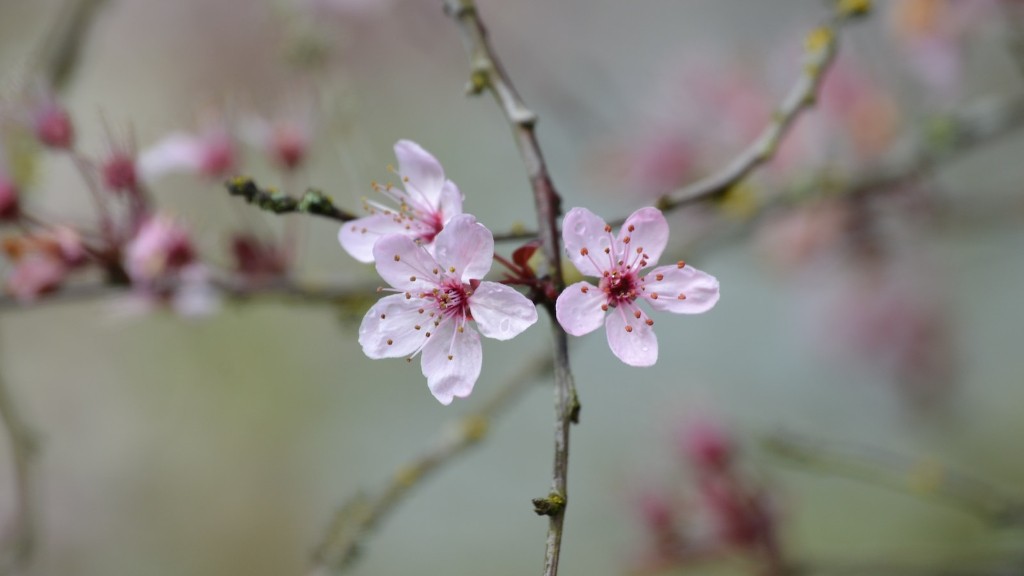The loss of leaves from a lemon tree can be concerning for the gardener. It is a problem that can pose many questions and the general knowledge of how a lemon tree should look and behave can be the key to diagnosing and preventing the cause of the leaf loss. In order to gain a better understanding of why a lemon tree has lost all its leaves, it is important to consider the potential causes and the subsequent steps that can be taken to reverse the problem.
Environment
When diagnosing leaf loss on lemon trees, it is important to consider the environmental conditions in which the tree is growing. Ideal environmental conditions for lemon trees are warm temperatures, with temperatures not dropping lower than 8°C – 10°C, adequate moisture and proper drainage. When lemon trees are exposed to excessive moisture or less-than-ideal temperatures, leaf loss can occur. Check that the lemon tree is in a sheltered area and that it is receiving adequate amounts of sunlight, water and nutrients throughout the growing season.
Disease and Pests
Diseases and pests can also result in the loss of leaves on a lemon tree. Issues such as leaf spot and anthracnose can be caused by fungal pathogens and cause discolouration and eventual leaf drop. Similarly, pests such as aphids and scale insects can carry out activities such as sucking on leaves and stunting of growth, ultimately leading to a decline in health of the tree and the loss of leaves. If signs of disease or pests are present, a lemon tree should be treated with suitable products.
Cultural Practices
It is possible that the cause of leaf loss on a lemon tree can be attributed to cultural practices. Improper pruning can, if carried out too harshly, result in the removal of too many leaves and branches and can, in some cases, lead to the death of the tree. Pruning should always be carried out carefully and with the use of aseptic techniques to avoid introducing diseases to the tree. Similarly, fruiting can put much stress on the tree, particularly when the tree is frequently harvested. To avoid this, it is important to ensure that a balanced fertilizer is used at the correct times.
Nutrient Deficiencies
Nutrient deficiencies can also contribute to leaf loss on a lemon tree. Symptoms of nutrient deficiencies can include yellowing of the leaves as well as discolouration, twisting and eventually desiccation of the leaves. Many different nutrients can be responsible for deficiencies, such as nitrogen, phosphorus, potassium, magnesium, calcium and boron. To treat these deficiencies, it is essential to firstly identify the nutrient that is causing the issue, and then apply a fertilizer to the soil containing the specified nutrient.
Tree Health
The health of the tree itself should also be taken into consideration when diagnosing the cause of leaf loss. If a lemon tree is struggling to produce new leaves, it may be a sign of root damage or lack of water. It is essential to check the health of the tree’s roots by digging around the tree’s rootball and by ensuring that the soil is kept moist. Similarly, checks for other root issues such as root rot should be carried out. If the tree looks healthy and doesn’t exhibit any discolouration of the leaves then it may be a sign of either a nutrient deficiency or a pest or disease.
Prevention
Prevention of leaf loss is in many cases more important than diagnosis and treatment. Firstly, it is important to ensure that the environment in which the lemon tree is planted is suitable, with conditions such as proper sunlight, adequate moisture and a warm to hot climate. Secondly, if a lemon tree is already showing signs of disease or pests, treatment should be applied to the tree as soon as possible. Finally, it is important to ensure that the tree is adequately fertilized and that pruning is carried out in a careful and precise way.
Cultivars
Different varieties of lemon tree can also be a contributing factor to leaf loss. This is because some lemon cultivars are more susceptible to diseases and pests, meaning they may be more prone to experiencing leaf loss. When choosing a lemon tree, it is therefore important to select a variety that is suited to the local climate and soil conditions. Additionally, research should be done into the advantages and disadvantages of different cultivars and to ascertain their susceptibility to diseases and pests.
Water Requirements
Adequate water should also be provided, particularly during the summer months. When lemons trees receive too little water, the leaves will become limp and droop and can eventually die, leading to leaf loss. To ensure appropriate levels of water, it is important to regularly inspect the soil around the tree for moisture and to add water as and when necessary. Additionally, the use of mulch can be an effective way of keeping the moisture within the soil.


